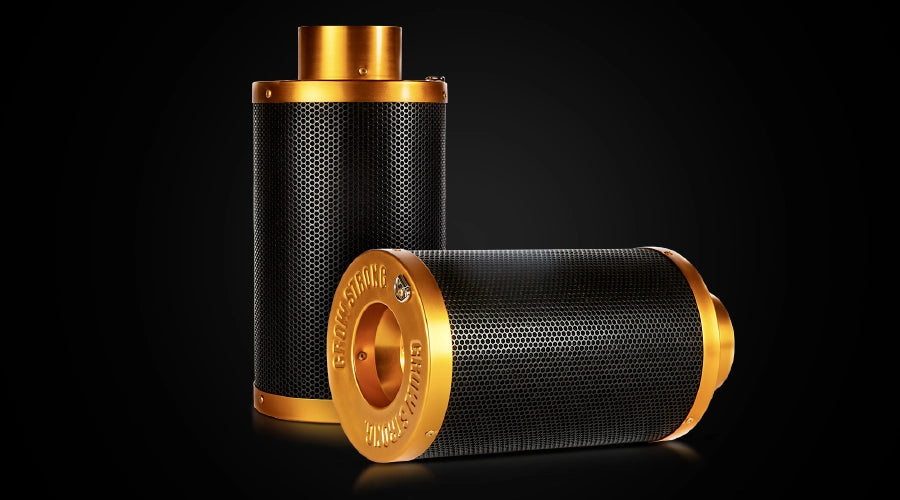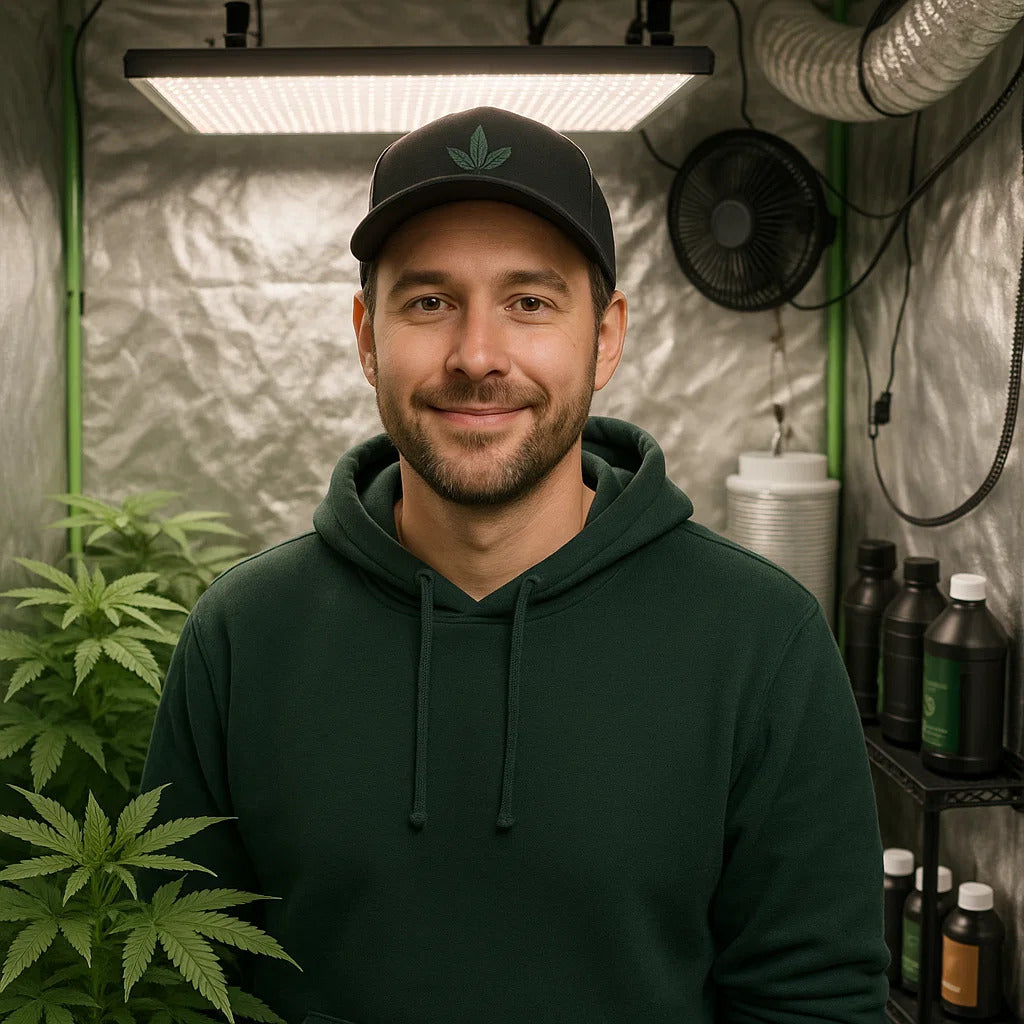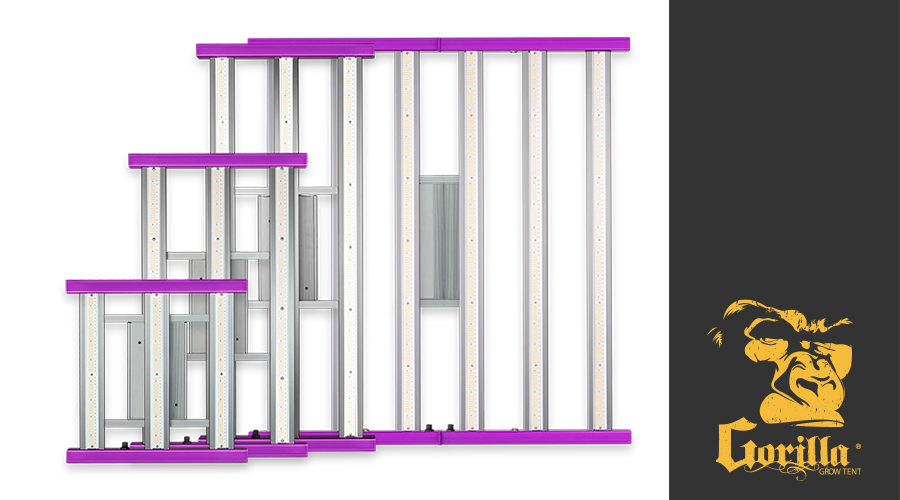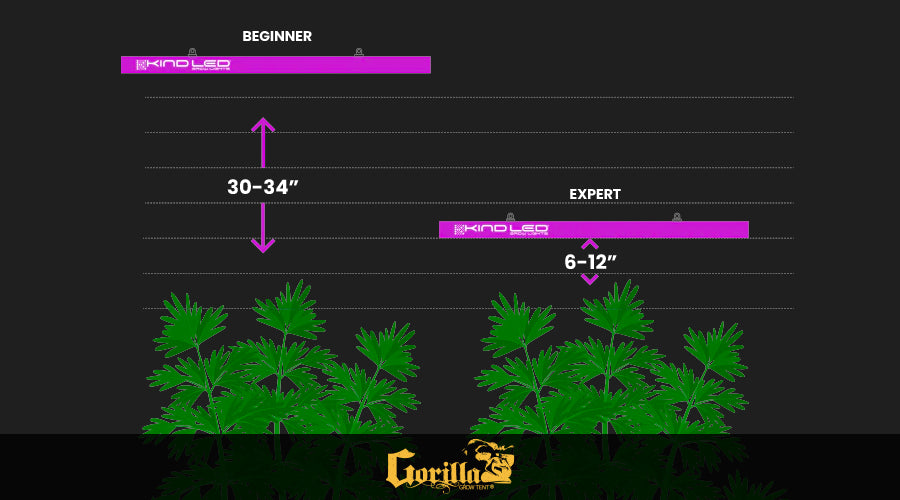
Mastering Grow Tent Ventilation Tips for Indoor Gardening
Growing plants indoors using a grow tent has become increasingly popular among gardening enthusiasts. These controlled environments provide the perfect conditions for cultivating various crops year-round. One of the crucial aspects of successful indoor gardening is ensuring proper ventilation within the grow tent. Efficient ventilation maintains a healthy and thriving environment for your plants and helps prevent potential issues such as mold, pests, and stagnant air.
This article explores essential grow tent ventilation tips and techniques to help you optimize your indoor gardening experience and achieve impressive yields.
Importance of Ventilation in Indoor Gardening
Proper ventilation is vital for a thriving indoor garden as it serves multiple purposes.
Grow tent ventilation is a dynamic process that requires careful consideration and regular monitoring.
How Proper Ventilation Boosts Your Indoor Garden's Performance
Temperature Regulation:
Effective ventilation helps manage the temperature within the grow tent, preventing overheating during hot periods and avoiding chilling during colder times.
Humidity Control:
Ventilation aids in maintaining the ideal humidity levels for your plants, preventing excessive moisture that can lead to mold and fungal issues.
CO2 Exchange:
Plants require CO2 for photosynthesis. Adequate ventilation ensures a continuous supply of fresh CO2 and prevents CO2 depletion within the grow tent.
Invest in Quality Ventilation Equipment:
Don't compromise on the ventilation equipment when setting up your grow tent. Invest in high-quality fans, inline ducts, and carbon filters. Opt for reputable brands known for their durability and performance. The right equipment will ensure efficient air circulation and filtration, keeping the grow environment clean and fresh.
Determine the Correct Fan Size:
Choosing the correct fan size is critical for maintaining the ideal airflow within the grow tent. Consider the tent's size and the number of plants you intend to cultivate. A fan with adjustable speed settings allows you to fine-tune the airflow as needed throughout different stages of plant growth.
Positioning of Fans and Filters:
Strategically place the fans and carbon filters to ensure proper air circulation and effective odor control. Position intake fans near the bottom of the tent to draw in fresh air, while exhaust fans and filters should be at the top to eliminate stale air and odors.
Implement an Exhaust System:
An exhaust system helps expel hot, humid air from the grow tent, promoting a steady fresh air flow. Using an inline fan with a carbon filter is recommended to reduce odors effectively. An oscillating fan inside the tent also helps distribute fresh air evenly across all plants.
Monitor Temperature and Humidity:
Regularly monitor the temperature and humidity levels inside the grow tent. Invest in a digital thermometer and hygrometer to ensure they remain within the optimal range for your specific plant species. Some grow tents may have built-in monitoring systems or ports to install these devices easily.
Use Ducting Wisely:
Proper ducting ensures smooth airflow within the grow tent. Keep ducts as straight and short as possible to minimize resistance and maximize efficiency. Avoid kinks and bends that can obstruct airflow.
Manage Light and Dark Cycles:
Sync your ventilation system with your light cycle. The fans should run continuously during the lights-on period to maintain steady CO2 levels. When the lights are off, you can reduce the fan speed to maintain a slightly lower humidity level and conserve energy.
Maintain Cleanliness and Hygiene:
Regularly clean and sanitize your grow tent to prevent the buildup of dust, debris, and potential pathogens. A dirty environment can hinder ventilation efficiency and increase the risk of pests and diseases. Keep the tent floor clear of fallen leaves and other organic matter, and periodically wipe down the walls and equipment with a mild cleaning solution.
Consider Passive Ventilation:
In addition to active ventilation with fans, consider incorporating passive ventilation to enhance airflow further. Passive vents, such as mesh-covered or adjustable flaps, can be strategically placed to facilitate natural air exchange without relying solely on electric fans.
Use Air Circulation Patterns:
Create a consistent air circulation pattern within the grow tent by placing fans strategically. This can be achieved by positioning one fan to blow air toward the intake vent, another to circulate air along the canopy, and a third to exhaust stale air. A well-designed airflow pattern ensures fresh air reaches all parts of the plant canopy, promoting uniform growth.
Employ Negative Pressure Technique:
Implement a negative pressure setup by ensuring the exhaust fan is stronger than the intake fan. This technique ensures that air is continually drawn into the tent, reducing the likelihood of odors escaping and pests finding their way inside.
Use Oscillating Fans:
Oscillating fans serve a dual purpose. They help maintain even air circulation and simulate the natural outdoor breeze, strengthening plant stems and encouraging robust growth. Consider placing oscillating fans strategically among your plants to achieve maximum benefits.
Control Noise Levels:
Some ventilation systems can generate noise, especially if powerful or run at high speeds. Choose quieter fan models or consider using acoustic ducting to minimize noise disturbances. A peaceful environment benefits the plants and your overall gardening experience.
Implement Light Traps:
If you're using the grow tent in a room that receives natural light, light leaks during the dark cycle can disrupt your plants' flowering stage. Install light traps or light-tight vent covers to prevent light infiltration, ensuring your plants receive the correct photoperiod.
Monitor and Adjust as Needed:
Keep a close eye on your plants and regularly assess how they respond to the ventilation setup. Monitor temperature, humidity, and plant health regularly, and adjust the ventilation system as needed based on the growth stage, outdoor weather conditions, or any changes you make to the tent environment.
Plan for Power Outages:
In the event of a power outage, your ventilation system will stop working, which can be detrimental to your plants, especially during critical growth stages. Consider having a backup power source, such as a generator or a battery-operated fan, to ensure continuous airflow during emergencies.
Preventing Pest Infestations:
Proper ventilation can help reduce the risk of pest infestations in your grow tent. Stagnant air can attract and harbor pests like spider mites, aphids, and fungus gnats. Maintaining consistent air circulation creates a less inviting environment for these unwanted visitors. Additionally, consider using natural pest control methods such as introducing beneficial insects or using neem oil to deter pests without harmful chemicals.
Use Variable Speed Fans for Plant Growth Stages:
Different stages of plant growth have varying requirements for temperature, humidity, and CO2 levels. Investing in variable-speed fans allows you to adjust airflow according to these specific needs. Seedlings, for example, benefit from gentle airflow, while more mature plants may require stronger ventilation to prevent heat stress.
Integrate Carbon Dioxide (CO2) Enrichment:
Supplementing your grow tent with additional CO2 can significantly boost plant growth if you're aiming for maximum yields. However, to make the most of CO2 enrichment, you'll need a well-ventilated space that allows for proper CO2 distribution. Monitor CO2 levels closely and ensure your ventilation system can handle the additional demand.
Use Inline Duct Fans for Quiet Ventilation:
If noise is a concern, consider using inline duct fans instead of traditional oscillating fans. These fans are installed outside the grow tent, pulling air through the ducts. This setup reduces noise levels inside the tent and allows for more precise control over airflow.
Keep a Ventilation Schedule:
Establish a ventilation schedule based on your plant's needs and the surrounding environmental conditions. During warmer months, you may need to increase the frequency of airflow to maintain appropriate temperatures. Adjust the ventilation settings as the seasons change to accommodate varying external temperatures and humidity levels.
Consider Exhaust Duct Mufflers:
Consider using duct mufflers if you're using powerful exhaust fans that produce significant noise. These accessories can significantly reduce the noise generated by the airflow without compromising ventilation efficiency.
Inspect and Clean Filters Regularly:
Carbon filters are crucial in removing odors and filtering the air from the grow tent. Regularly inspect and clean or replace the filters to ensure they function optimally. A clogged or exhausted filter will not effectively remove odors and may lead to air quality issues inside the tent.
Monitor and Minimize Light Leaks:
Light leaks during the dark cycle can disrupt the flowering stage and cause plant stress. Regularly inspect the grow tent for light leaks, especially around ventilation ports and seams. Use light-proof duct tape or light traps to seal openings and maintain a consistent dark period.
By understanding the importance of ventilation, investing in quality equipment, and following the tips mentioned above, you can create an optimized environment that nurtures your plants from seed to harvest.
Embrace the power of ventilation, and watch your indoor garden flourish like never before!

Lena Myles
I'm a mushroom enthusiast and home cook based in Oregon. I'm passionate about foraging and creating fungi-focused recipes, especially delicious, plant-based dishes using gourmet mushrooms like trumpet, shiitake, and oyster. When I’m not in the kitchen, you’ll usually find me wandering the woods in search of new wild flavors.


